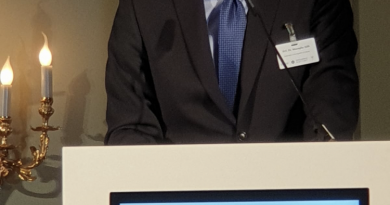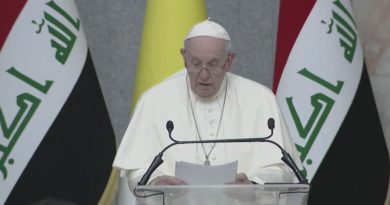Mosul’s Blood-Soaked Liberation
Mohammed Syed
Staff Writer
The Battle of Mosul pushed on for eight months before the fighting came to a halt, late last month. It was a battle that raged amidst booby traps, suicide bombers, civilian human shields, sniper nests, bombardments, hostages, and cold, dead, tortured bodies.
In its latest stages, almost 20,000 civilians remained hidden from the world, trapped in the city’s basements and corridors, reports Al Jazeera. BBC reports that more than 920,000 people have been displaced as a result of the fighting. Iraqi forces desperately fought to free civilians who had been trapped as human shields in between 50 to 100 households.
Iraqi Prime Minister Haider al-Abadi stressed a military strategy of “man before land,” which prioritized the protection of civilians. This was done despite the Islamic State Group’s intentions of slowing the siege through taking advantage of the risk of human collateral.
Despite al-Abadi arriving in Mosul on July 9 to declare the city liberated, fighting continues. Lieutenant General Abdul-Amir Yarallah, head of the Nineveh Operations at the Joint Operations Command, reports that Iraqi forces destroyed 1,247 booby-trapped cars, 1,500 military vehicles, and 130 drones in the process.
“The Iraqi army fought a battle that no army in the world had fought,” said Yarallah.
The battle in the Old City was fought in narrow alleyways and hidden tunnels. 250 families were trapped in an area of around 100 square meters, the majority of besieged civilians being women and children. 150 suicide bombers attempted to launch one last massive attack instead of surrendering, which would have resulted in execution by the Iraqi forces.
Brett McGurk, special presidential envoy for the global coalition to defeat ISIS briefed reporters, stating that President Trump’s recent strategy in the battle against extremism in Syria and Iraq had “dramatically accelerated” progress in the fight. Almost 8,000 square miles have been gained from ISIS under Trump.
U.S. lawmakers criticized the apparent lack of a post-conflict solution from the administration, but McGurk highlighted that the United States will not fully-aid reconstruction or nation-building. Trump’s focus is on removing mines, clearing rubble, and ensuring that basic infrastructure, such as electricity, water, and sewages is available for displaced residents to return.
Amnesty International accused U.S. and Iraqi forces of using disproportionately powerful weapons in the battle. Iraqi and U.S. forces carried out attacks in West Mosul using weapons such as IRAMs (Improvised Rocket Assisted Munitions) to wreak havoc in densely populated areas. Amnesty investigated 45 pro-government attacks that killed at least 426 civilians. The March 17 U.S. strike in Mosul killed over 200 civilians.
Pro-government forces would air-drop leaflets into ISIS controlled areas of Mosul, instructing civilians to stay away from ISIS or to hang clothing on roofs to mark civilian homes. But this measure failed to take account the fact that staying away from ISIS was impossible for Mosul residents, most of which were held hostage, and anyone caught with a flyer or hanging clothing would be executed. Amnesty alleges that houses with children’s clothing on the roof were still hit by air strikes.
“The strikes targeted the IS snipers. A strike would destroy an entire house of two stories. They’d hit one house and also destroy the two houses on either side. They killed a huge number of people,” said Mohamed from West Mosul in the Amnesty Report.
Due to the rubble and destruction, an accurate death toll of the conflict is nearly impossible. No organization can even provide a ballpark estimate. Iraqi soldiers continue to discover mass graves created by ISIS to dispense of the dead in record numbers.
At the Hamam al-Alil agricultural college, a killing field was discovered when soldiers followed a strange smell. Inside of the agricultural faculty building, they uncovered the remains of 100 beheaded bodies of citizens that had been killed by ISIS soldiers.
The largest grave was found in the Khafsa sinkhole, just off of the Baghdad-Mosul highway. The sinkhole, once an unobtrusive and unimportant feature of the Iraqi desert, is now the final resting place for thousands of the Islamic State Group’s victims. 4,000 bodies lay inside, many of them security personnel who had been shot and dumped into the pit. Others died in vehicles that were driven over the edge.
“Daesh would drive the victims to Khasfa in convoys of minibuses, trucks and pickups. The men had their hands bound and their eyes blindfolded. They were taken to the sinkhole and shot in the back of the head,” said Mahmoud, a villager from nearby Sananik.
While Mosul is liberated, fighting continues in small pockets across Iraq. Sleeper cells remain active at the gates of Baghdad, the Iraqi capital, where soldiers and security personnel thwart suicide bombers almost daily.
ISIS still controls three small towns: Tal Afar, west of Mosul; Hawija, south of Kirkuk; and Al Qaim, west of Anbar. Most of the complications in retaking these towns is due to complex political fragmentation between Kurdish authorities, Shiite militias, and Sunni leadership.
The polarity between Kurdish leaders, many of which are leading the Syrian Democratic Forces and fighting alongside the Iraqi troops, and the bureaucracy in Baghdad also creates complications. Especially because of the Kurds’ intent to hold a referendum on their own nation-state independence.
In Syria, ISIS only remains in half of its capital, Raqqa- where US-backed leftists Kurds and their Arab allies have hammered and eroded ISIS’ urban territory.
According to McGurk, the SDF have cleared about 40 percent of the city. McGurk told the New Yorker that, “The Syrian Democratic Forces, the force we are working with, is incredibly brave. They are going into these high-rise buildings, room by room, floor by floor, to root these guys out.”
East of Raqqa, in Deir al-Zour, the Aerospace Forces of the Russian Federation are supporting Bashar al-Assad’s Baathist army with air strikes against ISIS positions. These strikes, however, are paving Raqqa’s eastern and southern flank for Americans and Kurds to attack. Although Damascus has expressed worry over Syrian Kurdish expansionism, and intends to reincorporate the region into a united Syria.


